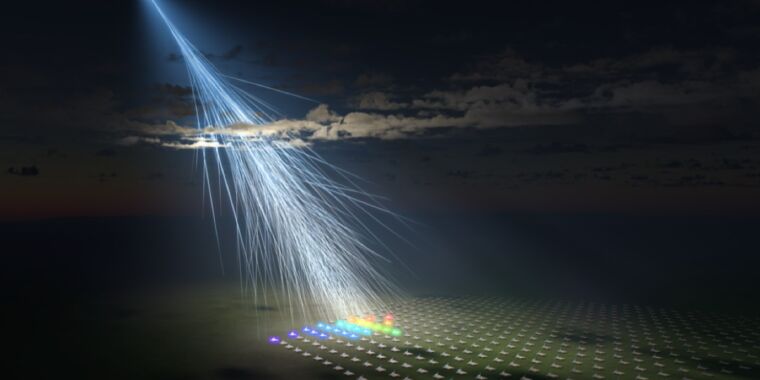Check out the extraordinary artist’s illustration of ultra-high-energy cosmic rays causing extensive air showers. This artwork is credited to Toshihiro Fujii/L-INSIGHT/Kyoto University. Astronomers part of the Telescope Array experiment in Utah’s West Desert recently made an incredible discovery. They detected an ultra-high-energy cosmic ray (UHECR) with an astounding energy level of 244 EeV. These findings were published in the renowned journal Science. In 1991, they detected the impressive “Oh-My-God” particle with energies of 320 EeV. This recent discovery has been named the “Amaterasu” particle, inspired by the Shinto sun goddess who is credited with creating Japan. Some even humorously refer to it as the “Oh-My-Goddess” particle. Cosmic rays are highly energetic subatomic particles that travel through space at the speed of light. When they hit the Earth’s atmosphere, they disintegrate into showers of particles.
Victor Hess discovered cosmic rays in 1912 during a series of balloon ascents with an electroscope to measure radiation in the atmosphere. He found that the rate of ionization was three times that of sea level, disproving a competing theory that the radiation came from the Earth’s rocks. In regard to cosmic rays, the least energetic ones are the most common, and these are the type that Hess detected. However, in 1965, a theoretical limit as to just how energetic a cosmic ray could be was proposed, calling for no more than 50 EeV coming from more than 300 million light years from Earth. Despite this, the discovery of the “Oh-My-God’ particle in 1991 challenged that prevailing theory, leading to countless questions about the origin and nature of ultra-high-energy cosmic rays. Could black holes, active galactic nuclei, or gamma-ray bursts be responsible for such high-energy particles? The source of the ultra-high-energy cosmic ray responsible for this exceptional discovery remains a mystery. Their trajectories are bent by magnetic fields in space, making it difficult to trace them back and identify their origin.
Given the technological advancements, there has been an increased ability to detect such particles. However, determining their source is the next challenge. As we continue to investigate and expand our telescopes and detection abilities, we hope to unravel the mystery behind these ultra-high-energy cosmic rays.


